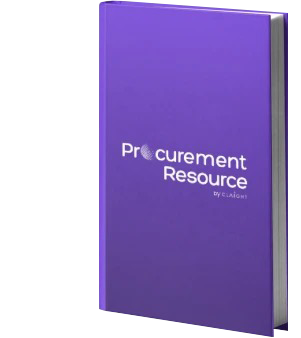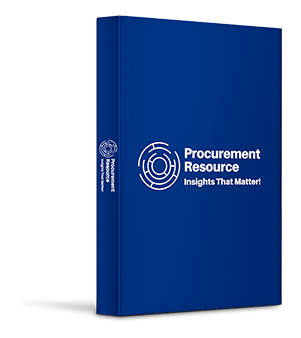Reports

Global Urea Market: Country Overview; Value Chain Analysis; Production Process; Trade Analysis; Market Dynamics: Drivers & Constraints, Industry Events, Innovations & Trends, SWOT Analysis; Porter’s Five Forces; Industry Best Practices: Sourcing Strategy, Procurement Model, Contract Structure, Negotiation Levers, Pricing Model, Key Factors Influencing the Quotation; Key Supplier Analysis, 2024-2032
Urea Industry Report by Regional Category Spend, Price Analysis, Key Demand, and Price Indicators, and Best Buying Practices
The global Urea market reached a value of about 195.4 million tonnes in 2021. The industry is projected to grow at a CAGR of around 1.8% in the forecast period of 2022-2027 to reach a value of about 213.6 million tonnes by 2027.
The global Urea industry report gives a comprehensive analysis of the industry, including key segments, trends, drivers, restraints, the competitive landscape, and other essential market aspects. The industry is primarily driven by the agricultural sector's demand for fertilisers. In the industry report, the key demand indicator is the highest category spender by region—Asia Pacific.
Industry Definition and Segmentation
Urea or carbamide is the major nitrogen-containing component in mammalian urine and plays a significant role in the metabolism of nitrogen-containing substances by animals. It's a colourless, odourless substance that's very water-soluble and almost non-toxic. Urea is used as a fertiliser and feed supplement and a raw ingredient for the production of polymers and pharmaceuticals. Before boiling, it decomposes into a colourless, crystalline material. The Urea industry report comprises segments by application (fertiliser, urea-formaldehyde (UF) and melamine resins, melamine (cyanurates), and animal feed) and region (North America, Europe, Asia Pacific, the Middle East, and Africa, and South America).
The Asia Pacific Region is Driving the Growth of the Industry
The Asia Pacific holds the largest share in the market due to the rapid developments in the agriculture sector, leading to robust demand for fertilisers in countries such as India and China. In addition, China is the leading producer and user of urea in the Asia Pacific area. Furthermore, numerous government programmes in some countries, such as the Indian government's fertiliser subsidy programme, are boosting market development.
The market is mainly driven by the product's application in the production of fertilisers. Compared to the commonly used ammonium nitrate, urea is less expensive and produces a larger crop yield in less time. As a result, urea is now widely used as a fertiliser and an animal feed ingredient. Fertilisers, medicines, adhesives, laminates, moulding compounds, resins, varnishes, and textile finishes are all made with it. It has a wide range of uses in agriculture, chemistry, automotive, and medicine. The growing use of urea in the automobile industry is further fuelling the market expansion, and urea is widely used to reduce nitrogen oxide emissions from diesel vehicles in this business. Also, the factors like Population growth, urbanisation, and numerous government programmes have a favourable influence on the worldwide urea market.
However, the hazardous effect of urea is likely to hinder the market growth.
Best Procurement Practices
The global Urea industry report by Procurement Resource gives an in-depth analysis of the best buying practices followed by major global Urea regions, such as engagement models, contract terms, and buyer and supplier negotiation levers, among others.
Category Management Studies
Urea is created from artificial ammonia and carbon dioxide for industrial use. Large amounts of carbon dioxide are produced due to the ammonia manufacturing process as a by-product of hydrocarbons (primarily natural gas, but also petroleum derivatives) or coal (steam shift reaction); urea plants are almost always located near the ammonia manufacturing site. Even though natural gas is the most cost-effective and readily accessible ammonia plant fuel, plants that use it create less carbon dioxide than is required to convert their total ammonia production to urea.
Various Uses of the Component, Further Augmenting the Procurement of Urea
The industry is being propelled by the use of technical grade urea in various applications, including glue, medicinal medications, colours, disinfectants, cosmetics, and yeast manufacturing. The nitrogen content of technical grade urea must be at least 46% by weight (on a dry basis). Urea-formaldehyde resins, adhesives, plywood, animal feed, and cloud seeding agents require technical grade urea. Urea is generally used to make urethane, then polymerised to create polyurethane foams. Another key growth-inducing aspect is the availability of high-quality technical grade urea, which is widely used in the production of medicinal medicines, dyes, disinfectants, cosmetics, and yeast. Other reasons, such as advances in melting and granulation technologies to improve urea's energy and cost-effectiveness and the expanding demand for urea in the chemical sector, are expected to fuel the market even more.
The regional markets for the industry can be divided into North America, South America, Europe, the Middle East and Africa, and the Asia Pacific.
Key Industry Players Mentioned in the Urea Industry Report
- Yara International ASA
- Qatar Fertiliser Company (QAFCO)
- PT Pupuk Kaltim
- Indian Farmers Fertiliser Cooperative Ltd. (IFFCO)
- CF Industries Holdings, Inc.
Market Landscape
The global urea market is somewhat fragmented, comprising a small share of the manufacturing capacity. To extend their geographical presence and sales, several main market participants highlighted in the report have concentrated on product innovation, strategic alliances, and expanding their production facilities. Acquisitions, product innovation, collaborations and partnerships with important players, strategic alliances, and the growth of regional and worldwide distribution networks are just a few of the main tactics.
Key Initiatives by Companies
- EuroChem Group agreed to develop a new ammonia and urea factory in northwest Russia for USD 1.6 billion in capital expenditure (CAPEX) in June 2021. Furthermore, the factory is expected to generate 1.4 million tonnes of urea per year, with commercial production beginning in 2024.
- The Competition Commission of India (CCI) approved Paradeep Phosphates Ltd.'s acquisition of Zuari Agro Chemicals LTD's Zuarinagar factory in Goa in June 2021. The facility is dedicated to researching and developing urea and other fertiliser products. As a result, Paradeep Phosphates Ltd's Urea business will benefit from the acquisition.
1. Executive Summary
2. Urea Industry Snapshot
2.1. Urea Market Outlook
2.2. Urea Industry Analysis, by Application
2.2.1. Fertilizer Applications
2.2.2. Urea Formaldehyde (UF) & Melamine Resins
2.2.3. Melamine (cyanurates)
2.2.4. Animal Feed
2.3. Regional Overview
2.3.1. North America
2.3.2. Europe
2.3.3. Asia Pacific
2.3.4. Latin America
2.3.5. Middle East & Africa
3. Impact of Recent Events
4. Urea Value Chain Analysis
5. Urea Production Process
6. Trade Analysis
7. Major Risk Factors in Sourcing
8. Urea Cost Structure
9. Urea Price Analysis
10. Key Demand Indicator Analysis
11. Key Price Indicator Analysis
12. Urea Market Dynamics
12.1. Drivers & Constraints
12.2. Industry Events
12.3. Innovations & Trends
12.4. SWOT Analysis
12.5. Porter’s Five Forces
12.5.1. Buyer Power
12.5.2. Supplier Power
12.5.3. Threat of New entrants
12.5.4. Threat of Substitutes
12.5.5. Industry Rivalry
13. Feedstock Market Analysis
13.1. Market Overview
13.2. Price Analysis
14. Industry Best Practices
14.1. Sourcing Strategy
14.2. Procurement Model
14.3. Contract Structure
14.4. Negotiation Levers
14.5. Pricing Model
14.6. Key Factors Influencing the Quotation
15. Key Supplier Analysis
15.1. Yara International ASA
15.2. CF Industries Holdings Inc
15.3. Saudi Basic Industries Corporation
15.4. Qatar Fertiliser Company
15.5. Indian Farmers Fertiliser Cooperative Limited
The global Urea market size was valued at 195.4 million tons in 2021.
As per the application provided, the Fertilisers segment is anticipated to lead the market between 2022 and 2027.
The significant demand for fertiliser in the farming industry is one of the important drivers of the Urea market growth.
Yara International ASA, Qatar Fertiliser Company (QAFCO), PT Pupuk Kaltim, Indian Farmers Fertiliser Cooperative Ltd. (IFFCO), and CF Industries Holdings, Inc. are some of the key companies in the market.
The Asia Pacific region of the Urea industry holds a significant share in the market.
The Global Urea market attained a value of 195.4 million tons in 2021, driven by the product's application in the production of fertilisers. Compared to the commonly used ammonium nitrate, urea is less expensive and produces a larger crop yield in less time. As a result, urea is now widely used as a fertiliser and an animal feed ingredient. Furthermore, it is extensively used in various industries, including agriculture, chemistry, automotive, and medicine.
Aided by the use of technical grade urea in various applications, including glue, medicinal medications, colours, disinfectants, cosmetics, and yeast manufacturing, the market is expected to witness further growth in the forecast period of 2022-2027, growing at a CAGR of 1.8%. The market is projected to reach 213.6 million tons by 2027. Some of the leading players in the industry are Yara International ASA, Qatar Fertiliser Company (QAFCO), PT Pupuk Kaltim, and Indian Farmers Fertiliser Cooperative Ltd. (IFFCO), and CF Industries Holdings, Inc.
Procurement Resources' detailed research approach explores deep into the industry, encompassing the macro and micro aspects of the industry. Its team of experts uses cutting-edge analytical tools and their expertise, thus, delivering its customers with market insights that are accurate and actionable and help them remain ahead of their competition.
Compare & Choose the Right Report Version for You
RIGHT PEOPLE
At Procurement Resource our analysts are selected after they are assessed thoroughly on having required qualities so that they can work effectively and productively and are able to execute projects based on the expectations shared by our clients. Our team is hence, technically exceptional, strategic, pragmatic, well experienced and competent.
RIGHT METHODOLOGY
We understand the cruciality of high-quality assessments that are important for our clients to take timely decisions and plan strategically. We have been continuously upgrading our tools and resources over the past years to become useful partners for our clientele. Our research methods are supported by most recent technology, our trusted and verified databases that are modified as per the needs help us serve our clients effectively every time and puts them ahead of their competitors.
RIGHT PRICE
Our team provides a detailed, high quality and deeply researched evaluations in competitive prices, that are unmatchable, and demonstrates our understanding of our client’s resource composition. These reports support our clientele make important procurement and supply chains choices that further helps them to place themselves ahead of their counterparts. We also offer attractive discounts or rebates on our forth coming reports.
RIGHT SUPPORT
Our vision is to enable our clients with superior quality market assessment and actionable evaluations to assist them with taking timely and right decisions. We are always ready to deliver our clients with maximum results by delivering them with customised suggestions to meet their exact needs within the specified timeline and help them understand the market dynamics in a better way.

Global HEOR Service Market: Size, Trend, Analysis and Forecast 2024-2032
The global HEOR market reached a value of about USD 1364.3 million in 2021. The industry is further expected to grow at a CAGR of about 12.81% in the forecast period of 2022-2027 to reach a value of around USD 2779.2 million by 2027.

Global Artificial Intelligence Market: Size, Trend, Analysis and Forecast 2024-2032
The global Artificial Intelligence Market reached a value of about USD 192 Billion in 2021. The industry is projected to grow at a CAGR of around 23% in the forecast period of 2022-2027 to reach a value of about USD 664.86 Billion by 2027.

Global Nutmeg Market: Size, Trend, Analysis and Forecast 2024-2032
The global nutmeg market reached a value of about 134 thousand tonnes in 2021. The industry is further expected to grow at a CAGR of about 4.5% in the forecast period of 2022-2027 to reach a value of around 167 thousand tonnes by 2027.
